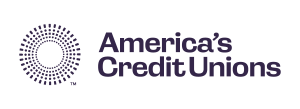Digital banks—often referred to as neobanks—are on the rise. These “challenger banks,” only accessible via their online platforms, have streamlined business models, and attractively simple services that are pulling customers away from long-established banks and credit unions.
Neobanks offer similar services as traditional lending and banking institutions—things like checking accounts, debit cards, and personal loans. But without the high cost of brick and mortar locations, these flourishing businesses can target an increasingly tech-savvy population. They’ve rolled out sleek products backed by polished virtual platforms, all while cutting costs for the consumer.
As customers become more comfortable with online virtual services en lieu of in-person transactions, challenger banks now pose real threat for long-established banking institutions. These trends have only accelerated as COVID-19 has pushed consumers to make even more transactions online. McKinsey estimates that by 2025, up to 40% of banks’ collective revenue could be at risk from new digital competition. Credit unions face the same threat.
With light profiles and intuitive digital platforms, emerging neobanks are built for speed. While some large institutions can take up to a month to establish an account or line of credit, challenger banks have optimized their services for a start to finish setup often in as little as 48 hours. Neobanks recognized that when selecting a banking institution, consumers often choose the path of least resistance. In a rapidly digitizing age, customers are acutely sensitive to the level of effort required of them to make financial decisions. The fewer the clicks and information required in the application process, the more likely a prospective customer signs up.
Despite the many beneficial services neobanks can provide, there are also clear drawbacks where traditional lending institutions can outperform. Neobanks are just as their moniker suggests: new. And as fledgling businesses, many neobanks are more concerned with rapid growth than insuring their own profitability. Understaffed customer service departments, service blackouts, software glitches, and a lighter level of federal and state regulation can all pose potential risks to neobank customers.
While neobanks will likely never possess the same community presence or dedicated commitment to their membership, they are undeniably beating most credit unions on the fronts of technology and innovation.
Rate Reset set out to level the playing field. Our award winning white-label KNOCK KNOCK Platform helps credit unions take business back from agile challenger banks. As a feature of KNOCK KNOCK, The Button™ allows institution members and non-members alike to instantly pre-qualify themselves without hurting their credit.The Button™ removes all friction from the online application—with just a few clicks, customers can apply for home, auto, personal loans, and even credit cards through a soft-pull credit check mechanism. The Button can be integrated seamlessly into a credit union preexisting system in under 90 days.








